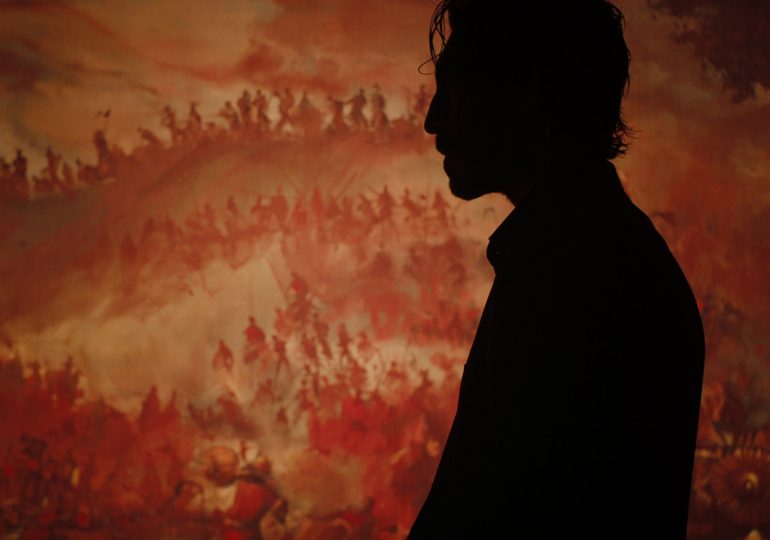Cinema isn’t a science, but a number of political films are distinctly Newtonian: they contain equal and opposite forces, resulting in inertia. Adam McKay’s 2021 climate change satire Don’t Look Up blames the public’s disinterest in politics on its obsession with fame, all while flaunting a celebrity ensemble; this isn’t the gravest offense, but it calls the movie’s message and self-awareness into question. Gualtiero Jacopetti and Franco Prosperi’s 1971 Italian mockumentary Addio Zio Tom (Goodbye Uncle Tom), which seeks to lampoon American slavery, but does so by dehumanizing hundreds of poor Haitian extras on camera; a horrific hypocrisy. The list goes on.
[time-brightcove not-tgx=”true”]
Monkey Man—the action-packed, politically-volatile directorial debut of actor Dev Patel—is plagued with a similar problem, but it’s neither as fluffy as McKay’s faux pas, nor as materially harmful as Jacopetti and Prosperi’s exploitation. Patel’s revenge film exists between these two extremes, with contradictory optics stemming from images whose creation is well-intended, but whose meaning grows more incongruous and disconcerting as the current events of India’s thorny political climate fades into view.
While Monkey Man is set in the fictional, Mumbai-esque city of Yatana, Patel is hardly subtle about his aims and influences. His character (referred to as “Kid”) dons an ape mask and embarks on a vengeful mission against the men who wronged his family—men deeply entrenched in Indian politics. Chief among them is the fictitious yogi Baba Shakti (played by Marakand Deshpande), a revered religious leader whose name, “Shakti,” means “power” in Hindi. Patel even briefly employs video footage of real protests against India’s current regime under the BJP (the Bharatiya Janata Party) and Prime Minister Narendra Modi, albeit without invoking their names.
As the Indian government cracks down on dissent, a film that takes even nominal aim at its right wing stronghold is arguably an act of bravery. But Monkey Man’s opposition to India’s growing Hindu nationalism—the Hindutva movement, about which alarm bells have been sounding for some time—is marred by a paradoxical approach: Patel’s nameless bare-knuckle brawler implicitly reclaims tenets of Hinduism, like the monkey-god Hanuman, by using them as spiritual fuel for a bone-crunching offensive. But while the Kid’s fury may be righteous, it transmutates these images into symbols of sanctimonious violence, echoing India’s contemporary political milieu in uncomfortable ways.
The Preamble to India’s Constitution emphasizes secularity. However, a rampant Hindu supremacy has taken hold since Modi’s 2014 rise to power, from the lynchings of religious minorities, to the recent Citizenship Amendment Act, which, in combination with India’s National Register of Citizens, leaves many of the country’s 200 million Muslims vulnerable to internment and deportation. After years of anti-Muslim pogroms, these issues came to a symbolic head in January, with Modi’s public inauguration of the Ram Mandir, a controversial Hindu temple built atop the ruins of the Babri Masjid, the mosque demolished by Hindu extremists in 1992.
Read More: India Is Unveiling Its Controversial Temple of Ram. Here’s What to Know
For supporters of the temple, their primary justification is a claim that many historians agree has no evidence: that the Masjid was built atop the birthplace of Lord Ram, a chief figure in Hindu scripture. In recent years, chants of “Jai Shri Ram” (“Praise Lord Ram”) have become a rallying cry for acts of extremist violence against minorities, making the act of weaponizing Hinduism in fiction inseparable from real atrocities. Notably, the central Hindu epic about Lord Ram, the Ramayana—a common influence in Indian storytelling—features Hanuman in a pivotal role, as Ram’s loyal devotee. For many Western viewers, their first exposure to the Ramayana’s influence was the Oscar-winning, crossover Tollywood hit RRR, whose climax transformed real-world freedom fighters Alluri Sitaram Raju (Ram Charan) and Komaram Bheem (N.T. Rama Rao Jr.) into avatars for Ram and Hanuman respectively. But that film, too, was not without its troubling optics.
Hanuman, like Ram, has also been invoked during mob violence in recent years. In June 2023, the release of the Ramayana-based movie Adipurush involved a campaign to leave one seat empty at each screening to represent Hanuman’s presence; at least one patron didn’t get the memo, and was allegedly physically assaulted when he sat in the empty chair. Even movie theaters aren’t immune to the weaponization of Hindu deities. And like “Jai Shri Ram,” the slogan “Jai Bajrang Bali” (another name for Hanuman) has been hurled during attacks on Muslims and other minorities, and was even adopted by Modi as punitive catchphrase, making its inclusion in the film—a crowd member chants it in support of Kid during a fight—disorienting at best.
Read More: India’s Ayodhya Temple Is a Huge Monument to Hindu Supremacy
Monkey Man not only sees “Kid” don the ape god’s likeness, accompanied by flashbacks of his mother (Adithi Kalkunte) regaling him with tales of Hanuman’s bravery, but the movie uses the Ramayana as a structural influence too. In the original epic, Hanuman assists in rescuing Ram’s wife, Sita, from the clutches of the demon king Ravana. Monkey Man features a similar subplot in which Kid tries to rescue an escort named Sita (Sobhita Dhulipala) from a brothel frequented by the evil police inspector Rana (Sikandar Kher), one of his primary targets. Further similarities between Kid and Hanuman arise in an avant-garde detour, when the drug-induced Kid has a vision and rips open his chest to reveal light emanating from within. This image is commonly seen in depictions of Hanuman, who opens his heart to reveal images of Ram and Sita, symbolizing his dedication.
The reclamation of such images appears to be Patel’s goal—one he shares with numerous Hindu leaders who have continued to battle Hindu nationalism. But the use of Hindu imagery as a call to violence, reminiscent of the Hindutva project, is central to Kid’s mission, resulting in narrative dissonance. In comparison, the movie’s villains only use Hinduism as a façade for violence and financial gain, rather than as a sincere fixture of their fanaticism. They represent Hindutva only in the abstract, echoing its power structures without its ideology. Kid, meanwhile, perhaps inadvertently, embodies it in both belief and action.
In a key flashback, Rana—acting on Shakti’s orders—clears out Kid’s forest-adjacent village so the land can be used for industrial growth. This bears a striking resemblance to the Indian government’s recent attempts to evict thousands of Muslims along India’s Eastern border and millions of indigenous people from tribal lands. The BJP’s political opponents believe these land seizures are an attempt to transfer tribal resources to corporate allies, not unlike Shakti’s plan for Kid’s village. However, the metaphor is muddled. Rather than framing Kid’s community as an oppressed caste, religion, or tribe, the only visible culturally specific moment involves the villagers enjoying a marionette re-telling of the Ramayana, which is interrupted by incendiary violence. In the movie’s purview, Hinduism is under attack from something non-Hindu, or falsely Hindu, rather than from dangerous factions of Hinduism itself. This grants Kid permission to weaponize it freely, sans conflict or spiritual reckoning—a thematic tension the movie never reconciles.
As Monkey Man neared its April 5 U.S. release, its villains were further stripped of key details tying them to real-world Hindutva. The movie’s first trailer, released in January, featured shots of Shakti’s political supporters brandishing saffron-orange flags and party posters, a color closely linked to Hindu nationalism. However, by the time Monkey Man premiered in March, these posters had been edited to appear red, a change which can be glimpsed in a more recent trailer. (Distributors Universal Pictures did not respond to a request for comment.) If these changes were made to avoid political ire, it wouldn’t be the first time the studio has had to contend with this. In July of last year, a scene in Universal’s Oppenheimer, which involved the sacred Hindu text the Bhagavad Gita, was met with right-wing religious backlash and calls for boycotts.
Monkey Man is also yet to release in India, with its scheduled April 19 date—a placeholder, according to a source in distribution—having been delayed (a recent update from Universal Pictures India on X simply listed it as arriving “in cinemas soon”.) The film hasn’t undergone the censorship certification required of all theatrical releases, a lengthy process which could see key scenes stripped away—if it’s granted a release at all.
Notably, April 19 also marks the beginning of India’s six-week long general election, the road to which has already been paved with the jailing of the BJP’s political opponents and the alleged freezing of their funds as Modi seeks his third term in office. Should Monkey Man be released in the coming months, the timing could also result in increased scrutiny and heated sentiments, despite its muddled critique. Patel’s good intentions may be obscured by novice storytelling and last-minute studio measures, but at a time when Indian industries like Bollywood increasingly toe the party line, Monkey Man is buoyed by enough political gusto to still ruffle a few feathers.
Leave a comment








